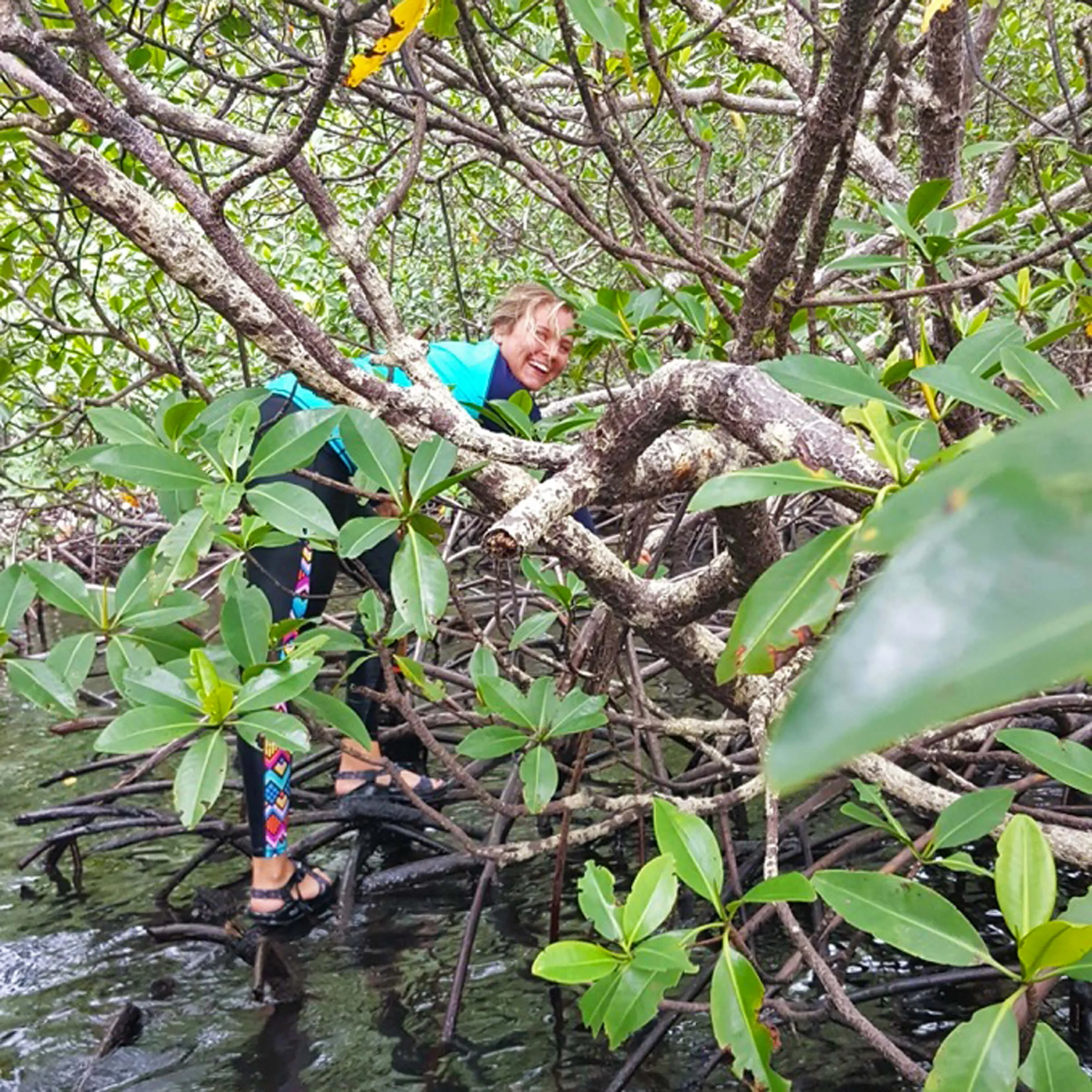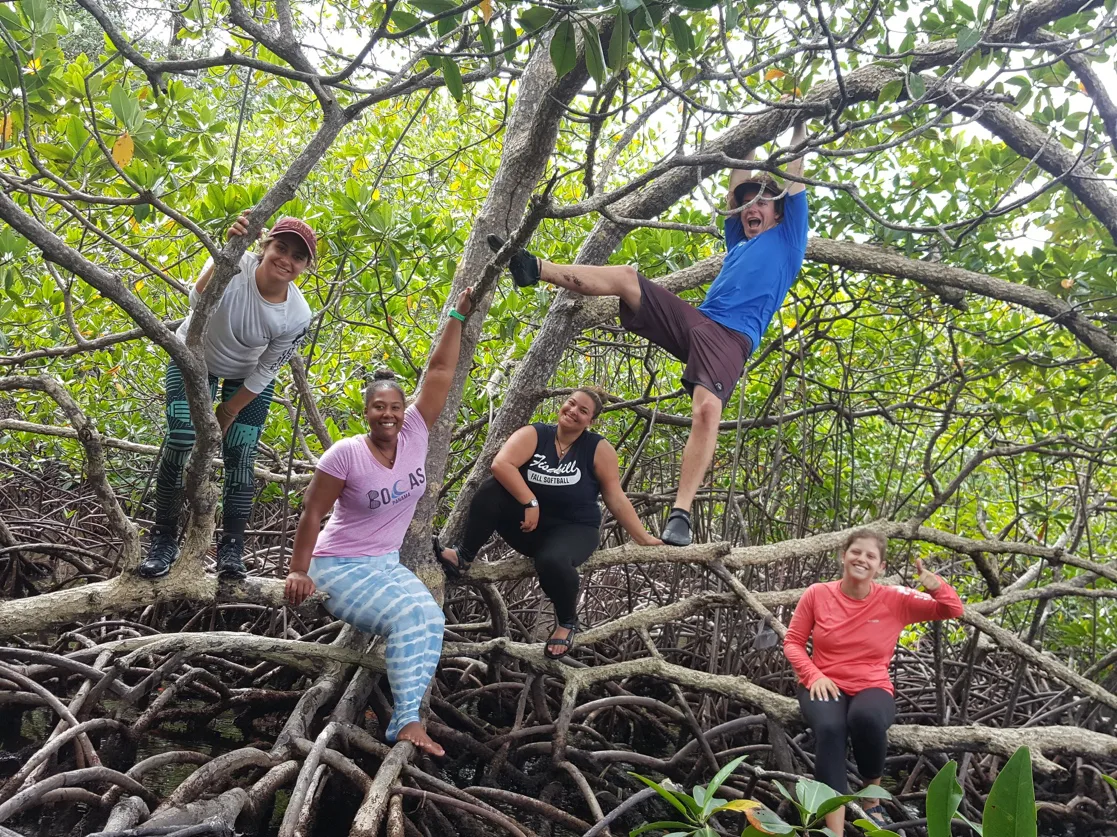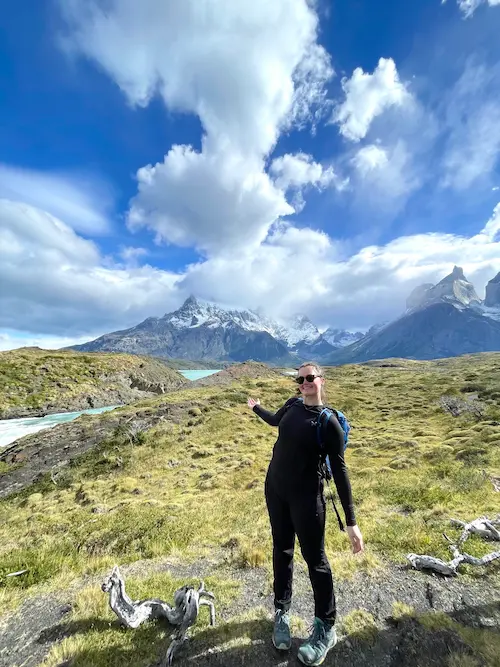Thirty Years Later
Thirty years later: Understanding the efficacy of the Isla Bastimentos National Marine Park in the conservation of marine and terrestrial habitats and in supporting sustainable tourism initiatives.
The SFS Center for Tropical Island Biodiversity Studies (TIBS) is tasked with deepening our ability to address the following research question:
How can the natural resources of the Bocas del Toro archipelago best be managed in order to promote conservation and sustainable use considering the socio-economic environment?
On our journey to address this very broad research question, we worked together as a faculty to design and implement a project that encompassed all aspects of our curriculum including marine and terrestrial ecology, socio-economics, culture, and environmental policy. We identified tourism in the region as an issue affecting all aspects of human and ecological activity. An estimated 150,000 visitors traveled to this small island archipelago in 2016. The effects of this tourism boom in Bocas del Toro on human and natural resources has yet to be fully quantified.

Fall 2017 student, Kylie Roehrle maneuvers her way through a mangrove forest for her research project which focused on understanding the relationship between mangrove tree size and percent epibiont cover in various geographical locations within and outside of the IBNMP
The Isla Bastimentos National Marine Park (IBNMP) was created in the Bocas del Toro archipelago in 1988 with the hope of protecting and conserving key marine and terrestrial species. This year, the park will celebrate its 30th anniversary. Our center’s research over the past year has focused on the efficacy of the park in protecting ecologically important habitats and species, and in supporting sustainable socio-economic activities. Our stakeholders include local fishermen, NGOs, Autoridad de los Recursos Acuáticos de Panamá (ARAP), Ministerio de Ambiente (MiAmbi), local boat drivers, tourism operators, small business owners, Autoridad de Turismo de Panamá (ATP), Autoridad Marítimo de Panamá (AMP), leaders of Ngobe-Buglé indigenous communities, teachers from local elementary and high schools, Ministerio de Desarollo Social (MIDES) and friends and neighbors of TIBS including Unidos por Bocas (United for Bocas), the Peace Corps and many others.
Faculty research has focused on five major topics thus far:
1. Assessing the design of the IBNMP on Ecological and Socio-economic efficacy.
2. Estimating mangrove forest health within and outside of the IBNMP.
3. Integrating historical and current data to determine management success of the IBNMP
4. Assessing tourism stakeholder satisfaction within the IBMNP and desires for infrastructural change
5. Coastal exploitation in tropical fishing towns
Research designed and conducted by students over the past year has elevated our knowledge of these very complex and intricately related fields of study. Importantly, their work, under the guidance of faculty, has been shared with our community stakeholders in both English and Spanish. Examples of student project titles are listed below and are used to exemplify the diversity of studies surrounding tourism and anthropogenic impacts on the natural environment:
- 2016 Parque Nacional Marino de Isla Bastimentos management plan is out of touch with stakeholder desires
- A study on the benefits of the MPA as perceived by three different user groups
- The Historic Coastal Exploitation of Marine Fauna in Bocas del Toro, Panama
- Assessing Tourist Consumer Demand Pressures on Fish Stock Depletion in Bocas del Toro, Panama
- Investigating the use of adult tropical sea urchins as bioindicators for ocean acidification
- The Effects of Marine Protected Areas on Coral Health: Coral Bleaching, Disease, Mortality, Damage and Coral Associates
- Understanding the relationships between fire sponge (Tedania ignis) and the diversity of fish associated with Rhizophora mangle roots in Bocas del Toro, Panamá
- Anthropogenic Impacts on Mangrove Crab Diversity, Relative Abundance, and Zonation in Bocas del Toro
- Implications of Substrate Content to Parrotfish Habitat Preference in Mangrove Habitats
- Sea Grass Habitats as Environmental Health Indicators—The Importance of Maintaining Mangrove Ecosystems
- Mammal Abundance and Predation Rates in Various Terrestrial Habitats of the Bocas del Toro Archipelago
- Diversity of pollinator assemblage in Bocas del Toro, Panama
- The Hunger for Tourism: Assessing Diet Diversity and Tourism Opportunity within the Isla Bastimentos Marine National Park
- The Pursuit for Responsible Ecotourism: Analyzing the Effectiveness of Ecotourism in the Bastimentos Island National Marine Park from Perceptions of Various Stakeholders
- Fishery Governance in Bastimentos Island National Marine Park: A Foucaultian Analysis of the Augmentation of Local Routines
- Damage control: The effectiveness of the Isla Bastimentos National Marine Park in reducing coral damage caused by snorkelers
- Rationalizing Parque Nacional Marino Bastimentos boundaries via assessment of ecosystem mapping and health data
- Comparison of Spider Diversity in Protected and Unprotected Mangrove Forests in Bocas del Toro, Panama
- The Aboveground Carbon Sequestration and Storage Capacity of Bocas del Toro’s Mangrove Forests
Results of these studies suggest that there are few significantly different values with regard to species diversity and abundance within and outside of the IBNMP. However, in areas surveyed that were far from urban centers and the IBNMP, invertebrate populations, for example, were statistically significantly higher than in sites located near urban areas or within the IBNMP. This suggests that perhaps anthropogenic impacts are as strong within the IBNMP as they are near urban centers. Furthermore, it was found that Zapatillas island in the IBNMP is a marque site in terms of how stakeholders perceive its importance. This has important consequences for how businesses interact with and manage trips to the region thereby influencing governance. Finally, fishers’ perspectives on coastal exploitation at Bocas del Toro integrated with fisheries landings data from Panama Caribbean region have shown a decrease in fish populations, with a significant difference in the fish catch amounts from the past to the present. Student research also uncovered a need for population studies on sharks and sea turtles.
As a faculty, we could not be prouder of the work of our students. We continue to work on the very real consequences of rapid development and unregulated tourism in the BDT region. Additionally, we will continue to share our results with our stakeholders and work together alongside them to develop solutions. We thank all of our previous students for their hard work and dedication to their research which is critical in the process of conservation and management in the BDT region. Finally, we are thrilled to once again have a wonderful group of students here at TIBS. They do not yet know the work that lies ahead, but it continues to be a joy, honor and privilege to have the important responsibility of training the next generation of marine, terrestrial and social scientists. We look forward to ushering in a new project this spring!

Dr. Scott and members of her research group take a moment to hang out in the mangrove forest during Directed Research
Related Posts


